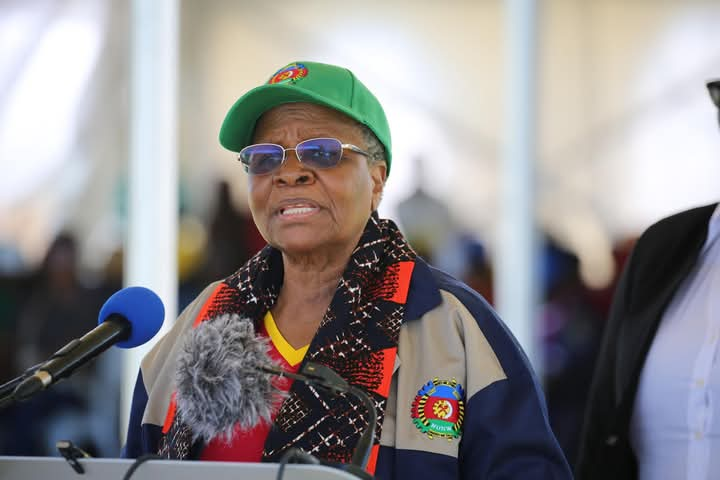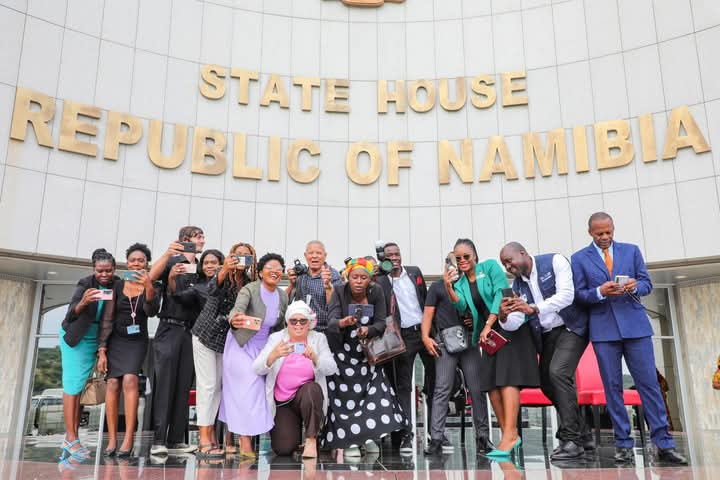THE Emergency Management Unit (EMU) has instructed the Caprivi Regional Council to carry out a flood-threat assessment in the region to prepare for a possible repeat of last year’s floods.
EMU Deputy Director Gabriel Kangowa said on Friday that he would await the Council’s preliminary assessment before dispatching a team from his office to the region. “After we have seen the report we will decide whether the situation will warrant our attention and how the situation will affect the people in the area,” Kangowa told The Namibian.The Zambezi River is currently about a metre deep in the Katima Mulilo area, with 10,3 mm of rain recorded at the town on Saturday.Yesterday, Katima’s weather office said heavy rain was falling at the town, while it was reportedly raining elsewhere in the region.But no figures were available.Thunder storms are forecast for the area for the next few days.Heavy rains continue to fall in countries neighbouring Caprivi, contributing to the rapid rise of the Zambezi river.According to the EMU, three major factors will play a role in determining whether residents might need assistance: the threat to lives, food security and damage to infrastructure.The EMU will also have to establish whether residents will be able to travel to schools and clinics should the water flow intensify.With the Kabbe constituency, in the east of the region, usually most affected by flood waters, extra food rations under the drought relief programme are being distributed to residents to prepare for such a situation.Officials say they are also looking at the possibility of areas such as Kongola in the west and Ibbu and Mahundu in the south experiencing problems.Caprivi Governor Bernard Sibalatani is currently travelling to villages in the flood plains to determine the severity of the situation.”From last year’s experience we have realised that it’s nature and we can’t predict it.We need to take precautions.Water is nature, but disaster is not an annual thing,” he told The Namibian.He said although the situation does not appear to be extremely serious at this point, water levels are rising and the river has broken its banks in some places.The Governor said while lives might not be threatened, he would have to determine whether residents would be able to harvest their crops in the coming months.In some places, plantations have already been waterlogged, and with little rain having fallen late last year, many crops are not yet ready to be harvested.Last year’s floods displaced 12 000 people, mostly in the Kabbe and parts of the Katima Rural constituencies, as the Zambezi river started to rise in January reaching 6,64 metres in depth by the end of April.Many dwellings and institutional structures were submerged by water and travel in the area was almost impossible.”After we have seen the report we will decide whether the situation will warrant our attention and how the situation will affect the people in the area,” Kangowa told The Namibian. The Zambezi River is currently about a metre deep in the Katima Mulilo area, with 10,3 mm of rain recorded at the town on Saturday. Yesterday, Katima’s weather office said heavy rain was falling at the town, while it was reportedly raining elsewhere in the region. But no figures were available. Thunder storms are forecast for the area for the next few days. Heavy rains continue to fall in countries neighbouring Caprivi, contributing to the rapid rise of the Zambezi river. According to the EMU, three major factors will play a role in determining whether residents might need assistance: the threat to lives, food security and damage to infrastructure. The EMU will also have to establish whether residents will be able to travel to schools and clinics should the water flow intensify. With the Kabbe constituency, in the east of the region, usually most affected by flood waters, extra food rations under the drought relief programme are being distributed to residents to prepare for such a situation. Officials say they are also looking at the possibility of areas such as Kongola in the west and Ibbu and Mahundu in the south experiencing problems. Caprivi Governor Bernard Sibalatani is currently travelling to villages in the flood plains to determine the severity of the situation. “From last year’s experience we have realised that it’s nature and we can’t predict it. We need to take precautions. Water is nature, but disaster is not an annual thing,” he told The Namibian. He said although the situation does not appear to be extremely serious at this point, water levels are rising and the river has broken its banks in some places. The Governor said while lives might not be threatened, he would have to determine whether residents would be able to harvest their crops in the coming months. In some places, plantations have already been waterlogged, and with little rain having fallen late last year, many crops are not yet ready to be harvested. Last year’s floods displaced 12 000 people, mostly in the Kabbe and parts of the Katima Rural constituencies, as the Zambezi river started to rise in January reaching 6,64 metres in depth by the end of April. Many dwellings and institutional structures were submerged by water and travel in the area was almost impossible.
Stay informed with The Namibian – your source for credible journalism. Get in-depth reporting and opinions for
only N$85 a month. Invest in journalism, invest in democracy –
Subscribe Now!










